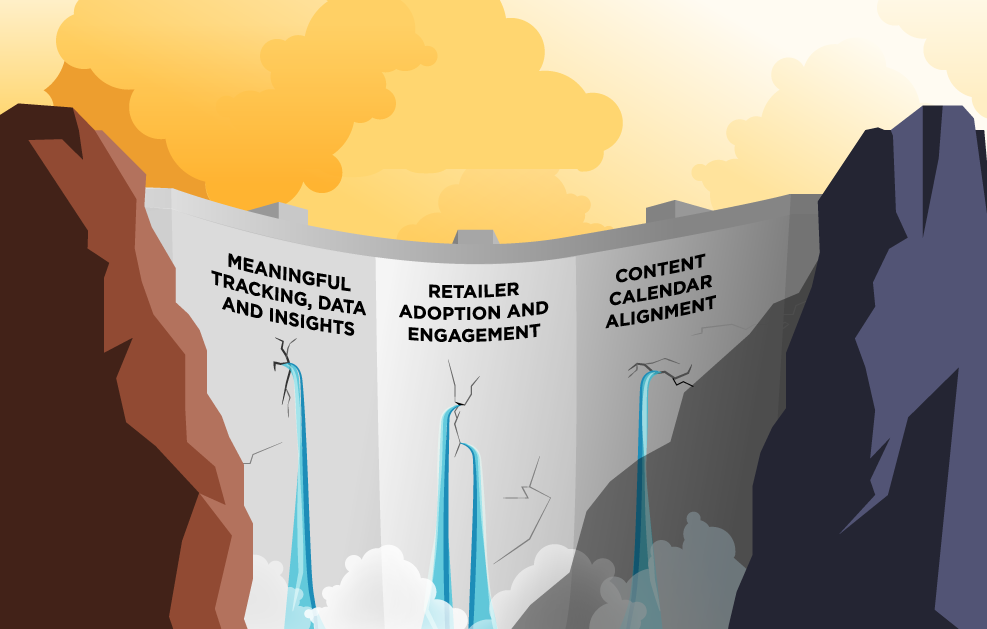

Whether internally built or provided by a third party like Dropbox or Widen, digital asset management (DAM) platforms are failing both the brands who seek to create consistent messaging at the local level and their retailers who want easy access to brand content to help bring customers in-store. The three largest issues they face are:
In a recent Retailers Rule interview, we asked Melody Karpinski, the Marketing Manager for Fleet Feet Sports (Santa Rosa), to share her thoughts on the digital marketing support she receives from the brands their store sells:
“To get the content from one of my other brands, I have to log into three different places, go through five different folders, look through all of the content, and decide what I’m going to post. Whether they even have it updated on time is another thing. It’s just a headache for at least three of my major brands.” — Melody Karpinski, Marketing Manager at Fleet Feet Sports (Santa Rosa)
Unfortunately, Melody isn’t the only one stuck with the burdens of a DAM. We hear stories far too often of retailers who simply don’t have the time to dig through the mess of a traditional digital asset management system. As retailer participation in digital marketing only continues to grow, brands need to start rethinking the way they’re sharing assets with their local retail network.
It’s no secret that asset management systems typically have low retailer adoption and engagement rates, yet there’s an unhealthy myth that this is because of retailers either being unsophisticated or disinterested when it comes to doing digital marketing.
Retailers have proven that they can do digital marketing, exemplified in the reach that they’ve generated organically on their own digital channels. While it varies by industry, our research shows that, by and large, retailers have at least 3,000 likes and followers–proving that they want to do the marketing and understand the channels.
However, a brand is asking its retailers to make sense of a messy, disorganized asset management system that requires approximately six steps and that’s just for one share!
Think of the number of brands, on average, that a retailer carries. Our research indicates that retailers spend between 8-10 hours per week trying to use the various systems that they’re offered by their brands to post content. No retailer has this kind of time to spend sorting through a brand’s assets to post content across their digital channels.
Do you know how often your retailers are promoting your content? What types of content perform best on their digital channels? What’s the organic reach look like for any one of your local retailers? If you’ve been using an asset management platform, chances are you won’t be able to answer any one of those questions (and that’s just for starters).
After the point of download, DAMs offer no significant insights, tracking or data into your retail network. Without that vital information, how can a brand expect to know what’s working and what isn’t working? If you can’t answer either, how will you ever grow and learn from both mistakes and wins? The truth is: you won’t.
Brands create campaigns and have content calendars to meet marketing goals. DAMs don’t align with those calendars, and often don’t support the goals of the brand overall. Without this alignment, the retailer is left with the choice as to what content to use, how to construct it in a meaningful way, and then has to do all of the work on behalf of the brand. This doesn’t help the retailer in any real way.
When the platform doesn’t align with the goals and objectives of the brands they are supporting, it leaves the retailer unengaged. DAMs strip retailers of the ability to promote the brand “on message” and “in time,” eliminating the crucial reach and power of brand messaging at a local level.
While digital asset management systems feel like “homework” to retailers, Promoboxx welcomes them to join an invite-only party to promote your brand content. Let’s take a look at how Promoboxx compares to typical digital asset management platforms:
√ Drives high retailer adoption and engagement rates
√ Creates alignment with brand content calendars
√ Saves retailers 8-10 hours a week, on average
√ Provides valuable data and insights into retail network

